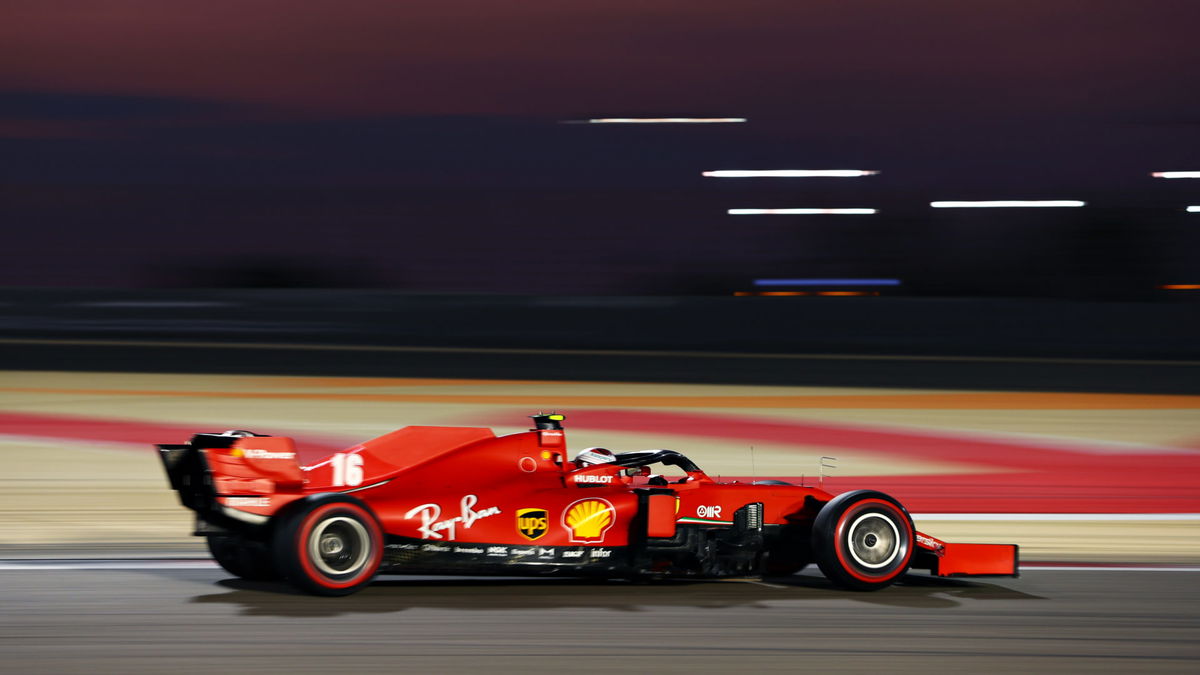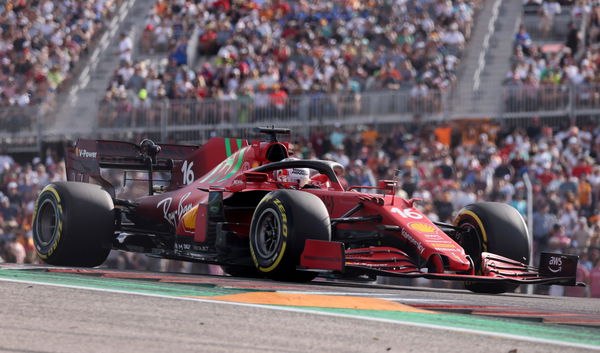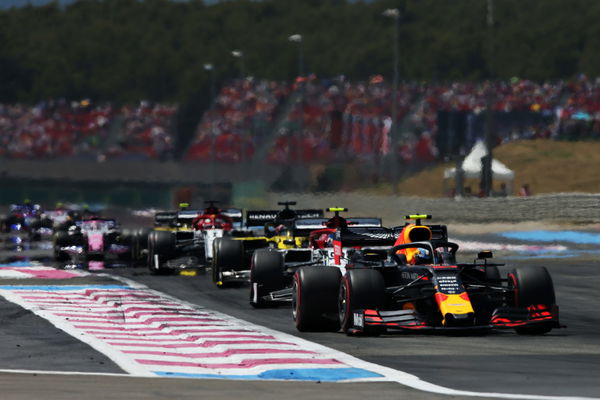
Getty
BAHRAIN, BAHRAIN: Charles Leclerc of Monaco driving the (16) Scuderia Ferrari SF1000 on track during practice ahead of the F1 Grand Prix of Sakhir at Bahrain International Circuit in Bahrain, Bahrain. (Photo by Dan Istitene – Formula 1/Formula 1 via Getty Images)

Getty
BAHRAIN, BAHRAIN: Charles Leclerc of Monaco driving the (16) Scuderia Ferrari SF1000 on track during practice ahead of the F1 Grand Prix of Sakhir at Bahrain International Circuit in Bahrain, Bahrain. (Photo by Dan Istitene – Formula 1/Formula 1 via Getty Images)
Formula 1 introduced the technology-driven V6 Turbo engines back in 2014, which consequently received a wide array of criticisms from the fans. And the reactions weren’t really that shocking, considering F1 had to lose one of the most attractive aspects of the car – the sound.
The cars became a lot quieter, making it an absolute contrast to the screaming V8 and V10 engines. On top of that, there were also the rocketing costs; several teams endured financial breakdowns, as F1 had to deviate from the traditional internal combustion engines and move towards more hybrid-centered.

Reuters
Formula One F1 – United States Grand Prix – Circuit of the Americas, Austin, Texas, U.S. – Ferrari’s Charles Leclerc in action during qualifying REUTERS/Mike Blake
Hence, the initial expense was always going to be monumental. But, after the first couple of years, i.e., 2013 and 2014, the teams managed to break away from the bankruptcy fears. On the whole, the sport looks much settled, especially amidst the inclusion of cost cap and engine freeze.
ADVERTISEMENT
However, despite desperate efforts from F1 and the FIA, the turbo-hybrid units are still receiving a lot of flak from the viewers. But the ongoing hybrid era isn’t as bad as it sounds. In fact, this is one of the most mind-blowing technological booms we’ve witnessed in pretty much the entire motorsport industry.
ADVERTISEMENT
Why the hybrid F1 engines are special
There are still a handful of spectators bemoaning the presence of V6 engines and are demanding the return of V8 and V10. But considering the direction in which the entire automotive industry is marching towards, F1 is certainly on the right path.
So, let’s take a look at how V6 hybrid engines stand out against other engines. The dawn of the energy recovery system was KERS (Kinetic Energy Recovery System). And in 2014, F1 decided to dismiss the KERS and rather opt for two modern units, MGU-H and MGU-K.
ADVERTISEMENT

Getty
Pierre Gasly of France driving the (10) Aston Martin Red Bull Racing RB15 leads Antonio Giovinazzi of Italy driving the (99) Alfa Romeo Racing C38 Ferrari on track during the F1 Grand Prix of France at Circuit Paul Ricard in Le Castellet, France. (Photo by Charles Coates/Getty Images)
While the former harvests energy from braking, the latter harvests energy from the heat of the exhaust. Under acceleration, the turbocharger would be rotating at around 100,000 RPM, producing enough heat to feed the MGU-H, which, in turn, gives it to the MGU-K.
Top Stories
“Took a Scandal for Alexandra”: Fans Unleash Hell at Charles Leclerc’s GF for PR Antics to Undo Past

Max Verstappen’s Siblings: Everything We Know About Victoria, Blue Jaye, Jason Jaxx, and Mila Faye

How F1’s 2026 Engine Rules Sound Alarm Bells for NASCAR and Others? – Explained

Breaking Down Rebecca Donaldson’s Jaw Dropping Dating History: From Kardashian Debut to Dating F1 Star

Who Are Lando Norris’s Parents? Meet Adam Norris and Cisca Wauman

This MGU-K, being connected to the crankshaft of the Internal Combustion Engine, will offer its full power to the DRS. This is certainly smart work from the hybrid engines, which not only saves abundant energy and fuel but also produces some record-breaking lap times and top speeds.
ADVERTISEMENT
Hybrid era, the much-needed breakthrough?
Let’s assume F1 stuck with the V8 engines beyond 2014; how bad could it have gone? Of course, it wouldn’t have affected the sport much, at least not through the early part of the 2010s.
However, with the automotive industries heading towards much greener cars and significant prioritization of the ‘electrical era’, by now, F1 would have ended up in the back foot against other racing series. F1 could have been tagged as a motorsport series hazardous to the environment.
ADVERTISEMENT

Reuters
Formula One F1 – British Grand Prix – Silverstone Circuit, Silverstone, Britain – July 15, 2021 The new 2022 F1 car is unveiled during a promotional photoshoot REUTERS/Andrew Couldridge
Thankfully, that’s not the case with the present hybrid engines. What’s more, bigger changes are coming in terms of sustainable fuels, which could well reduce carbon emissions. And Formula 1 is leading this drive, with more series seeking to join the pinnacle of motorsport.
Overall, amidst an all-electric Formula-E and Extreme-E, we’ve got Formula 1, a sport that is proving to offer a worthy alternative to complete electrification with hybrid engines and partially sustainable fuel and is also striving for maxing out the sustainability to 100%.
ADVERTISEMENT
Watch Story: Biggest Crashes From 2020 Featuring Leclerc, Vettel & Grosjean
ADVERTISEMENT
ADVERTISEMENT
ADVERTISEMENT

